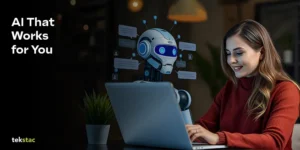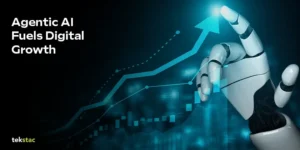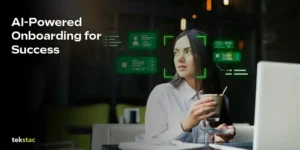Personalized Learning: The Key to Bridging the Skills Gap
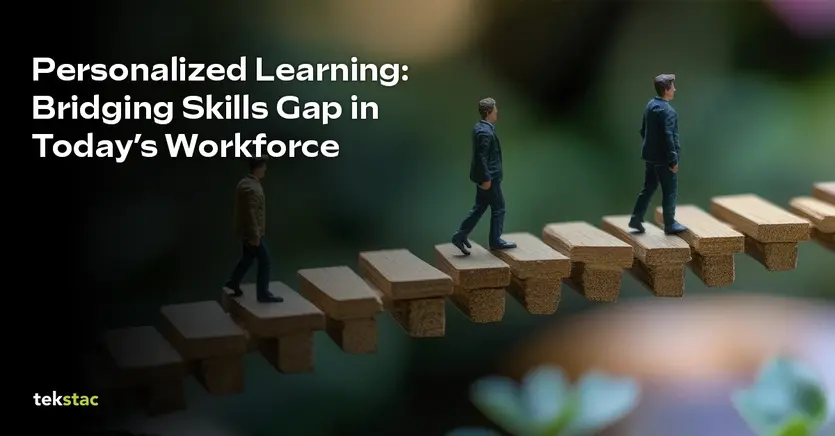
Closing the Skills Gap with Personalized Learning
Due to evolution of technology and changing business requirements, the need to bridge skills gap intensifies on a daily basis. This rapid change magnifies the existing skills gap, leaving traditional, standardized training methods struggling to keep pace.
As a result, employees may find themselves left behind, unable to meet new demands despite the training they receive. If the pace of upskilling isn’t fast enough, it may not just slow individual progress but also impacts team productivity, stifles innovation, and affect overall company performance.
These limitations highlight the need for a tailored approach-one that recognizes each learner’s unique background, skill set, and preferred learning style.
Here, personalized learning emerges as a powerful solution that not only responds to the need for different learning preferences but also fills the skills gap, boosts individual improvement, and enhances team productivity.
A recent PwC survey found that 70% of CEOs believe that personalized learning contributes to greater innovation within their organizations.
The Challenge of Skills Gap in a Diverse Workforce
As industries become increasingly technology-driven, job requirements are constantly evolving, which widens the skills gap across multiple sectors.
The term “skills gap” refers to a disparity between an employee’s existing skills profile and the skills that are needed for effective performance in current or future positions. When ignored, these gaps may lead to lower productivity, limited creativity and innovation, and increased employee turnover.
These challenges are magnified within a diverse workforce. This is due to generational differences Gen Z, Millennials and Gen X, who have different dynamics of comfort with technology, learning preferences, and career goals.
Furthermore, cultural diversity creates different ways of problem-solving, communication, and teamwork styles. Therefore, a one-size-fits-all training program often falls short.
What is Personalized Learning?
Personalized learning goes beyond traditional training by adapting development programs to each employee’s specific needs, learning style, and skill level. This individualized approach allows employees to progress at their own pace, fostering deeper engagement and a stronger connection to the material.
By aligning learning objectives with individual goals, personalized learning helps employees not only acquire the knowledge they need but also apply it effectively within their roles.
Moreover, personalized learning uses technology to create adaptive, immersive experiences. AI-driven platforms offer customized learning paths, targeted assessments, and instant feedback, tailoring each employee’s journey.
This approach maximizes impact by providing content and support that meets individual needs, fostering continuous skill development. As a result, organizations gain a more agile and capable workforce prepared for evolving demands.
Core Aspects of an Effective Personalized Learning Program
Designing an impactful personalized learning program requires meticulous planning & execution. Here are some key factors to consider.
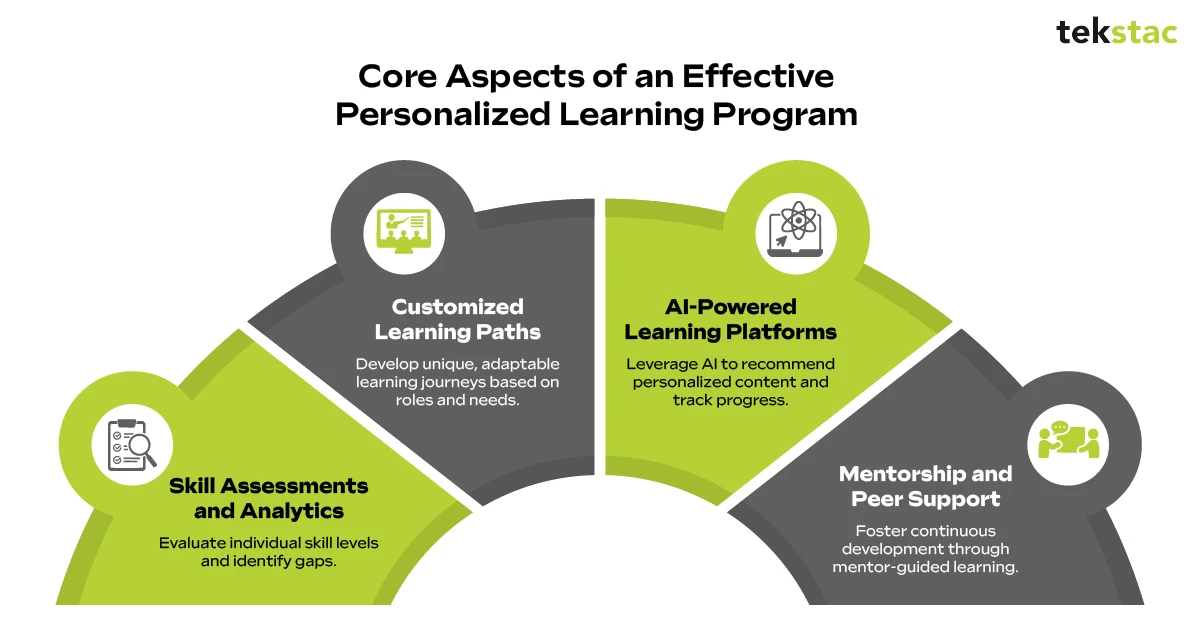
Skill Assessments and Analytics
The initial process for implementing personalized learning starts with identifying individual skill gaps. Regular evaluations and data analytics offer insights into each employee’s present skill level, thus enabling organizations to create targeted learning curves. This insight also helps senior-level managers oversee progress and refine learning agendas as necessary.
Customized Learning Paths
Some of the strategies that should be incorporated in personalizing learning include tailored paths that align with individual roles, career goals, and skill levels. These pathways can feature a combination of content types, like video guides, interactive modules, articles, and case studies to accommodate different learning styles.
AI-Powered Learning Platforms
Advanced AI technology can process data from employee evaluations and learning engagements and recommend customized content that suits each learner’s requirements. AI platforms can dynamically adjust learning paths dynamically thus providing a highly personalized experience and minimizing the need for human intervention.
Mentorship and Peer Support
Mentorship and peer support add more value to personalized learning. When employees are allowed to participate in peer-to-peer learning and build connections with mentors, it can drive knowledge sharing, cultivate a sense of community, and foster continuous improvement.
Tackling Potential Hurdles in Personalized Learning
While the advantages of the personalized learning approach cover a wide range of aspects, successfully integrating it into a diverse organization involves overcoming potential challenges.
According to Gartner, 70% of employees report not mastering the skills needed for their current jobs.
Resource Allocation
Designing a personalized learning program to suit an individual’s needs requires substantial resources. Organizations that plan to maximize ROI should initially start by focusing on essential skills gap and then gradually expand the program.
Technology Integration
Personalized learning is highly dependent on technology, such as artificial intelligence and data analytics. Incorporating these tools into an organization’s current framework demands strategic planning & investment.
Upskilling platforms like Tekstac are revolutionizing this process by providing a seamless, scalable solution for companies looking to implement personalized learning paths without the technological hurdles.
Tekstac’s platform uses advanced AI to create customized learning journeys for employees, aligning content with their skill levels, career aspirations, and specific job requirements. This integration simplifies the deployment of personalized learning, ensuring that technology becomes an enabler rather than a barrier.
Employee Buy-In
Personalized learning programs are effective only if employees completely engage with them. Organizations need to highlight these programs’ advantages and help employees understand how personalized learning can advance their career growth.
Benefits of Personalized Learning in Reducing Skills Gap
1. Improved Engagement and Motivation
Employees are more likely to participate in learning programs that resonate with their personal interests and career aspirations. Personalized learning enhances motivation by offering learning that aligns with an employee’s position, growth potential, and challenges.
A study by LinkedIn Learning revealed that 94% of employees would prefer to remain with a company that actively invests in career advancement, thus underscoring the critical role of immersive, tailored learning experiences in retaining talent.
2. Accelerated Skill Acquisition
Personalized learning allows employees to concentrate on specific skills related to their current job role, thus helping them learn new competencies more effectively. By utilizing AI-driven platforms and data-based assessments, personalized learning programs can detect and target each individual’s skills gap, thus refining the learning process.
For instance, if an employee wants to enhance their digital proficiency for a new position, a customized program can skip unnecessary learning content and focus on high-priority topics relevant to their responsibilities.
Based on a report by Deloitte, organizations using personalized learning are 58% more likely to report that their workforce’s skills align with business goals.
3. Flexible Learning Pathways
Allowing employees to advance at their own pace, personalized learning provides a refreshing alternative to traditional, rigid training programs. This flexibility is particularly helpful in a multifaceted team where each individual has different levels of experience or prior knowledge in specific areas.
Dynamic learning platforms can track an employee’s learning pace and modify content as needed to ensure that each learner grasps the required skills without feeling hurried or left behind. This approach prevents the learner from getting frustrated and sustains the learner’s confidence.
4. Targeted Feedback
Regular evaluations and feedback cycles allow employees to monitor their progress and recognize areas for improvement. Continuous feedback helps employees rectify mistakes and strengthen their abilities, thus fostering ongoing skill enhancement.
For instance, an employee who is learning a new programming language can get immediate feedback in real-time on their coding exercises, thus allowing them to consistently hone their skills rather than waiting for formal reviews.
According to the National Training Laboratory report, personalized, adaptive learning methods lead to 60% higher retention rates compared to traditional lecture-based training.
5. Enhanced Collaboration
Within a diversified workforce, employees contribute unique strengths & viewpoints. Personalized learning platforms offer peer-to-peer learning, motivating knowledge exchange across generations and cultural backgrounds.
Through discussion boards, collaborative projects, or mentorship programs, employees can benefit from each other’s experience and expand their skill sets. This approach helps close skills gap by leveraging the shared knowledge & expertise within the organization.
Final Thoughts!
Next-Gen Workforce Development with Personalized Learning
A study by McKinsey revealed companies that invest in personalized learning report a 20-25% increase in productivity.
Personalized learning goes beyond a mere trend; it is a proactive approach that addresses the needs of a diverse and rapidly evolving workforce. From boosting employee engagement and retention to improving productivity, the advantages of personalized learning are evident.
According to a study by Training Industry, employees in personalized learning programs reach competency 34% faster than those in traditional training programs.
As businesses invest in such programs, they become ready to embrace future challenges, building an environment where each employee is equipped with the right tools & support to succeed.

